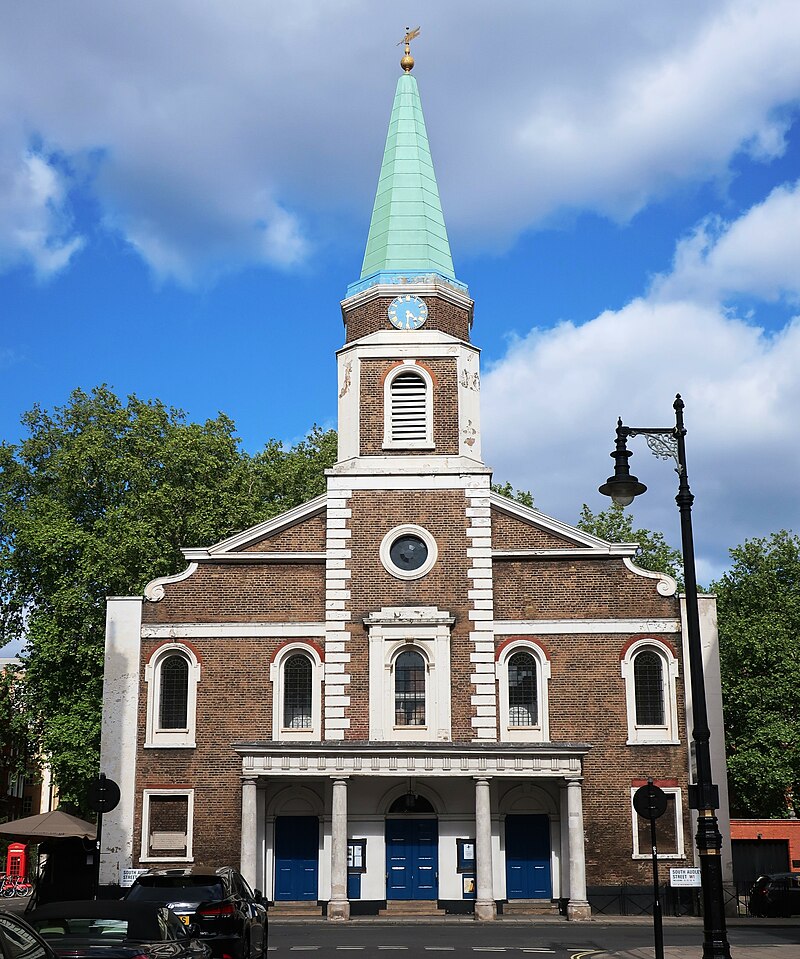© Unofficial Royalty 2024

James IV, King of Scots; Credit – Wikipedia
September 9, 1087 – Death of King William I of England (the Conqueror) at Hermentrube in Rouen, Duchy of Normandy, now in France; buried at St. Stephen Abbey in Caen, Duchy of Normandy, now in France
The House of Normandy began its rule in England in 1066 when William, Duke of Normandy invaded England and defeated the last king of the House of Wessex, Harold II Godwinson, at the Battle of Hastings. In 1087, the French garrison at Mantes made a raid into Normandy. William retaliated by sacking the town. While he was urging on his soldiers. William’s horse stumbled and he was violently flung against his saddle pommel. He received serious internal injuries, most likely a ruptured bladder. William was taken to the Priory of St. Gervais in Rouen where peritonitis developed. As he knew he was dying, William wrote a letter to Lefranc, Archbishop of Canterbury stating that Normandy should go to his eldest son Robert, England should go to his second son William Rufus, and his youngest son Henry should receive money. The youngest son later became King Henry I of England.
Unofficial Royalty: King William I of England (the Conqueror)
September 9, 1513 – Death of James IV, King of Scots at the Battle of Flodden Field; a body, thought to be his, was supposedly buried in Sheen Abbey in Surrey, England, and was lost during the Reformation
James IV married Margaret Tudor, daughter of Henry VII of England and sister of Henry VIII of England, as part of a treaty between Scotland and England. James IV and Margaret had four sons and two stillborn daughters. Only one of their children, James V, King of Scots, the father of Mary, Queen of Scots survived infancy. Despite the great hopes of peace between England and Scotland as symbolized by the marriage of Margaret and James IV, Margaret’s brother Henry VIII did not have his father’s diplomatic patience and was heading toward a war with France. James IV was committed to his alliance with France and invaded England. Henry VIII was away on campaign in France and Flanders in 1513 and he had made his wife Catherine of Aragon regent in his absence. It was up to Catherine to supervise England’s defense when Scotland invaded. Ultimately, the Scots were defeated at the Battle of Flodden near Branxton, Northumberland, England on September 9, 1513, and 30-year-old King James IV was killed in the battle. Catherine sent Henry VIII the blood-stained coat of his defeated and dead brother-in-law. James IV’s seventeen-month-old son succeeded his father as James V, King of Scots.
Unofficial Royalty: James IV, King of Scots
September 9, 1730 – Death of Charles FitzRoy, 2nd Duke of Cleveland, an illegitimate son of King Charles II of England and his mistress Barbara Palmer, 1st Duchess of Cleveland; buried at Westminster Abbey in London, England
In 1679, Charles married Mary Wood, the only child and the heiress of Sir Henry Wood, 1st Baronet. A year later, sixteen-year-old Mary died of smallpox. After many legal maneuvers, Mary’s fortune passed to her widower 18-year-old Charles Fitzroy who remained unmarried for fourteen years. In 1694, Charles married Anne Pulteney, daughter of Sir William Pulteney, a Member of Parliament, and the couple had six children. When Charles’ mother Barbara Palmer, 1st Duchess of Cleveland died in 1709, he became 2nd Duke of Cleveland. On September 9, 1730, 68-year-old Charles FitzRoy, 2nd Duke of Cleveland died in London, England. He was succeeded by his eldest son William FitzRoy. However, William was childless and when he died in 1774, all his titles became extinct.
Unofficial Royalty: Charles FitzRoy, 2nd Duke of Cleveland
September 9, 1813 – Death of Georg I, Prince of Waldeck and Pyrmont in Rhoden, Kingdom of Prussia, now in Saxony-Anhalt, Germany; buried in the Princely Mausoleum at Schloss Rhoden (link in German) in Rhoden, Principality of Waldeck-Pyrmont, now in the German state of Hesse
Georg had a short reign, from September 24, 1812 to September 9, 1813. The Principality of Waldeck-Pyrmont was heavily in debt during the reign of Friedrich Karl August, Prince of Waldeck-Pyrmont, Georg’s unmarried elder brother. In 1805, Friedrich Karl August unsuccessfully attempted to sell the Pyrmont as a cost-cutting measure. Instead, he decided to divide the Principality of Waldeck-Pyrmont, giving his brother Georg Pyrmont, while he kept Waldeck. In 1812, after the death of his childless elder brother, 65-year-old Georg succeeded him, and Waldeck and Pyrmont were reunited. Because of his age and perhaps illness, Georg knew that he would not be able to reign for long so he decided to stay in Pyrmont where he died.
Unofficial Royalty: Georg I, Prince of Waldeck and Pyrmont
September 9, 1826 – Birth of Grand Duke Friedrich I of Baden in Karlsruhe, Grand Duchy of Baden, now in Baden-Württemberg, Germany
Full name: Friedrich Wilhelm Ludwig
Friedrich’s father died in 1852 and was succeeded by Friedrich’s elder brother, Ludwig II. However, Ludwig was deemed mentally ill, and Friedrich was appointed Regent during his reign. When Ludwig died in 1858, Friedrich succeeded him as Grand Duke Friedrich II. Friedrich sided with Prussia in the wars against Austria and France and represented Baden at the Palace of Versailles when his father-in-law King Wilhelm I of Prussia was created German Emperor in 1871. Friedrich was a strong supporter of constitutional monarchy and was often at odds with his Prussian in-laws. His reign saw the adoption of civil marriage and free elections to the Baden parliament.
Unofficial Royalty: Friedrich I, Grand Duke of Baden
September 9, 1870 – Death of Baroness Louise Lehzen, governess, adviser, and companion to Queen Victoria, in Bückeburg, Principality of Schaumberg-Lippe, now in Lower Saxony, Germany; buried in the Jetenburger Cemetery in Bückeburg where Queen Victoria had a memorial to her erected
From 1824 – 1842, Baroness Louise Lehzen was the governess and then adviser and companion to Queen Victoria who called her Lehzen.
Unofficial Royalty: Baroness Louise Lehzen
September 9, 1882 – Birth of Henry Charles Lascelles, 6th Earl of Harewood, husband of Mary, Princess Royal, in London, England
Henry married Princess Mary, the only daughter of King George V of the United Kingdom at Westminster Abbey in London, England on February 28, 1922. Despite their fifteen-year age difference and despite rumors that the marriage was not happy, their elder son George Lascelles, 7th Earl of Harewood said the marriage was a happy one. He wrote in his memoirs that they “got on well together and had a lot of friends and interests in common.” Henry and his wife enjoyed country pursuits. They both regularly rode with the Bramham Moor Hunt where Henry was Master of the Hunt. Henry was a Freemason and served as Grand Master of the United Grand Lodge of England from 1942-1947.
Unofficial Royalty: Henry Charles Lascelles, 6th Earl of Harewood
September 9, 2015 – Queen Elizabeth II of the United Kingdom becomes the longest-reigning British monarch, breaking the record of her great-great-grandmother Queen Victoria
Unofficial Royalty: Queen Elizabeth II of the United Kingdom
Unofficial Royalty: Longest Reigning British Monarchs
This article is the intellectual property of Unofficial Royalty and is NOT TO BE COPIED, EDITED, OR POSTED IN ANY FORM ON ANOTHER WEBSITE under any circumstances. It is permissible to use a link that directs to Unofficial Royalty.












